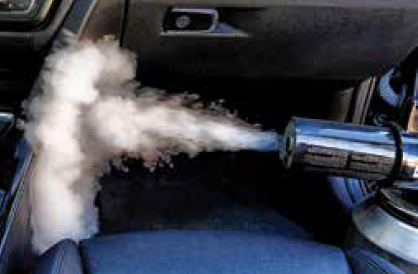ODOR REMOVAL SERVICE
The process of paint chip repair typically involves the following steps:
Cleaning: The area around the paint chip is thoroughly cleaned to remove any dirt, debris, or wax buildup that might affect the repair process.
Color Matching: The repair technician will try to match the paint color as closely as possible to the vehicle’s original color using color swatches or a paint code database.
Filling the Chip: A touch-up paint or clear coat is applied carefully to fill the chip, ensuring it is level with the surrounding paint surface.
Curing: The touch-up paint is left to dry and cure, usually for a short period of time, to ensure it adheres properly to the surface.
Sanding and Buffing: Once the paint has cured, the technician may lightly sand the repaired area to make it smooth and level with the rest of the paint. Afterward, they may apply a polishing compound to blend the repaired area seamlessly with the surrounding paint finish.
It’s important to note that paint chip repair is most effective for small and shallow chips. Larger or deeper damages, such as scratches or dents, may require more extensive repair techniques.
While paint chip repair can improve the appearance of the affected area, it may not always be a perfect match to the original factory finish. Achieving an exact match can be challenging due to factors such as paint fading over time and variations in application techniques. However, proper paint chip repair can help protect the exposed metal and prevent further damage, extending the life of the vehicle’s paint job. For more extensive paint damage or for a more flawless finish, seeking the services of a professional automotive paint specialist or body shop is recommended.

REMOVE FOUL, MOLDY ODORS FROM YOUR INTERIOR
Paint chip repair is a process aimed at fixing small, shallow paint damages that occur on the exterior of a vehicle. These paint chips are typically caused by rocks, road debris, or other small objects that hit the car’s surface, chipping away a small portion of the paint. If left untreated, these chips can lead to more significant issues like rust formation or further paint damage.

